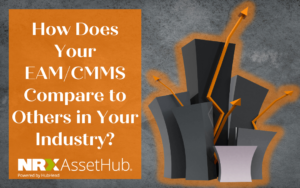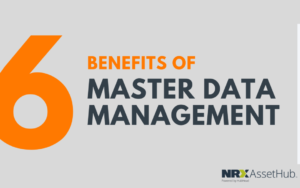One approach to doing so is benchmarking; this involves comparing current maintenance practices to other organizations to uncover potential inefficiencies. By bridging gaps and aligning with practices followed by industry leaders, EAM/CMMS systems can be streamlined to produce a leaner maintenance process.
Lean maintenance focuses on improving maintenance by reducing inefficiencies that add waste, increase costs or hinder productivity for the company. However, arbitrarily cutting costs can do more harm than good. Initiatives done to lower expenses must be purposeful; this involves evaluating inefficiencies in EAM/CMMS systems through benchmarking.
Benchmarking your EAM/CMMS system sets it up for success. Through benchmarking, businesses can adopt industry best practices, which ensures their EAM/CMMS system follows the most efficient processes possible. By bridging gaps, businesses can achieve a leaner maintenance process.
Here are some ways benchmarking data can improve maintenance processes:

1. Accurate and Up-to-Date Data
Accurate and up-to-date data is essential to a productive EAM/CMMS system. However, it can be challenging to identify issues in the EAM/CMMS.
Most commonly, information stored about BOMs, vendor documentation, and critical equipment contains missing information – which is needed to plan and perform maintenance efficently. This is an issue because the industry has evolved from traditional reactive maintenance methods; lean maintenance practices encourage proactive measures to eliminate unexpected repairs that result in unnecessary expenses and downtime. Benchmarking is beneficial in these cases since it highlights gaps or inaccuracies in EAM/CMMS data unknown to users.
2. Industry Best Standardization
Good data organization is powerful – especially if organizations have many asset-intensive units spanning different geographical regions. Consistent standards allow maintenance personnel to leverage timely and accurate data. Moreover, even from an individual business unit perspective, proper standardization eliminates inconsistencies, makes information easier to find, and ensures sufficient data is available to build effective KPIs.
Benchmarking recommends the best standards to align with according to others in the industry. For example, most process industries use ISO 14224 and many power generation companies use RDS-PP or KKS.
3. Efficient Spare Parts Management
Spare parts management can be expensive if not done effectively. The main issue usually lies in a lack of EAM/CMMS data that impacts spare parts procurement; often, procurement teams unknowingly order parts that exist in inventory. Or, unsure of which exact part to order, they buy a lot of equipment pieces they think would match the one needed. Consequently, the company loses money on unneeded spare parts and runs the risk of not even ordering the correct equipment piece.
Industry best practices indicate that using detailed exploded diagrams of engineering drawings on EAM/CMMS systems is the best method of avoiding this problem. This is because maintenance staff can access a user-friendly interface to find the correct equipment piece and order parts necessary for maintenance.
4. Leverage Reporting and Analytics to Make Good Decisions
The best part of effective EAM/CMMS data management is the foundation it provides for better decisions.
For example, good reports on data quality help organizations iteratively monitor their EAM/CMMS data. This is because these analyses identify non-compliances, operational integrity issues, and missing data before it causes capital/operation expenses. As such, it ensures accurate data is being inputted into the EAM/CMMS, which provides more accurate predictive analytics. Benchmarking EAM/CMMS data ensures great results on data quality reports and therefore enables a reliable EAM/CMMS system.
Achieve Leaner Maintenance with HubHead’s Benchmarking Service
HubHead’s team of experienced experts can help bridge inefficiencies in EAM/CMMS systems. We have helped many companies evaluate their maintenance process against others in their industries and have created ROI-based plans to adopt best practices.
If you want to learn more, download our brochure or visit our website by clicking on the link below. If you would like to talk directly to one of our consultants, book a meeting – we are happy to answer any of your questions.

Impacts of Inaccurate EAM Master Data on Maintenance and Operations

How Does Your EAM/CMMS Compare to Others in the Industry?

6 Benefits of Master Data Management

Share this article

